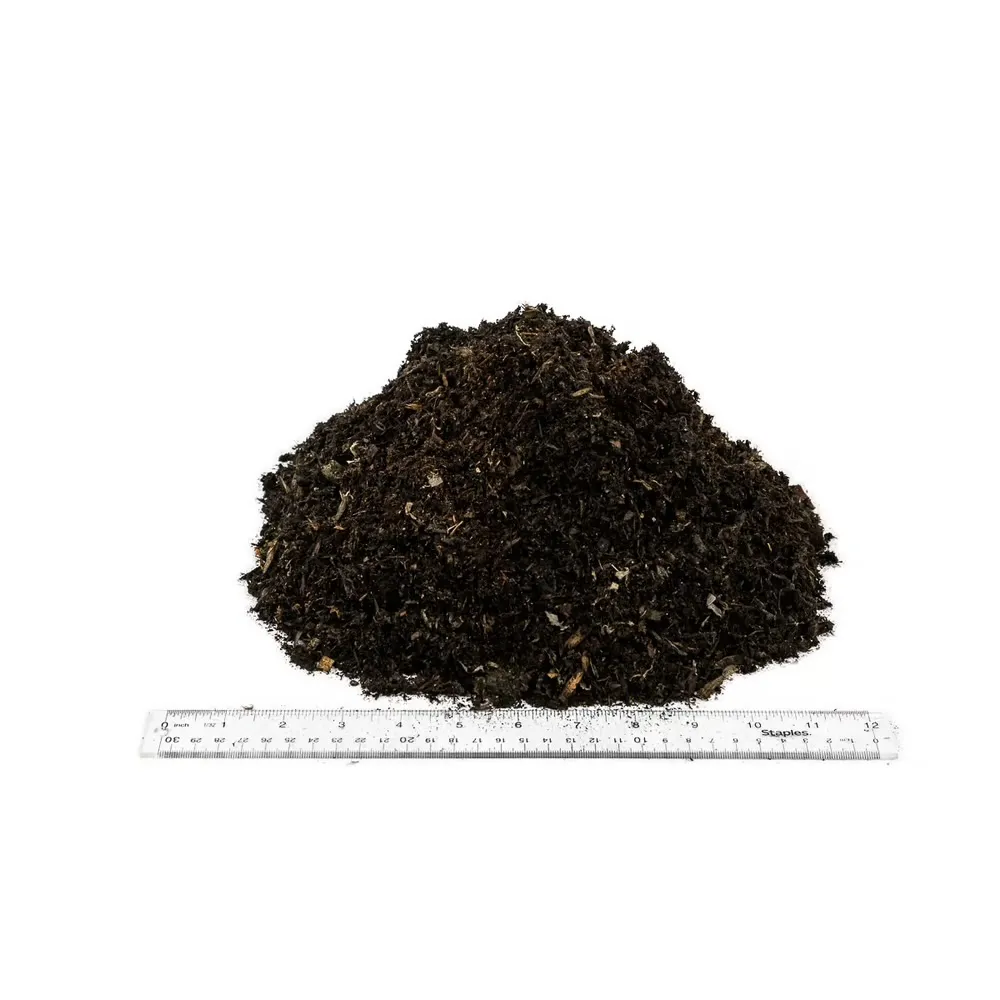Are you trying to decide whether to use topsoil or compost for your gardening or landscaping project?
The saying “The secret to a thriving, stunning, and bountiful garden lies in nutrient-rich, healthy soil”, is probably familiar to you. We stress this idea in all discussions and while responding to inquiries about gardening, so what should you add to achieve the best growing conditions?
Understanding the differences between the two is the first step for achieving peak efficiency. While gardening is typically learnt by hands-on experience, understanding the basics of soil and amendments can help you get started. In this article, we’ll look at their qualities, benefits, and optimal usage to help you make the proper decision for your project.
What is Topsoil?
Topsoil is the uppermost layer of soil, composed of a mixture of sand, silt, and clay. It plays a vital role in plant growth by containing essential minerals, organic matter, and microorganisms. These elements help support healthy plants by providing necessary nutrients and fostering soil fertility. The quality of topsoil can vary widely, influencing its effectiveness for gardening or farming. Therefore, selecting the right type of topsoil is necessary to ensure optimal plant growth and soil health.
Key Features of Topsoil:
- Typically 2 to 8 inches deep.
- Contains minerals essential for plant growth.
- Can be purchased as enriched topsoil for better fertility.
- Often used to fill in low spots or establish a solid foundation for gardens and lawns.
When to Use Topsoil?
Topsoil is best used for:
- Establishing a new lawn – Provides a solid foundation for grass seed.
- Leveling uneven ground – Fills holes and improves the landscape.
- Improving drainage – Helps reduce compaction and allows water to filter properly.
- Filling garden beds – Creates a base layer for planting flowers, shrubs, and vegetables.
If you need a large quantity, consider searching for topsoil in bulk near me to find local suppliers that can deliver directly to your location. You can also use a topsoil calculator to determine how much you need.
What is Compost?
Compost is decomposed organic matter from food scraps, yard waste, and other biodegradable materials. It enriches soil by adding nutrients and improving its structure, making it a valuable soil amendment. Compost is rich in organic matter and beneficial microorganisms, enhances soil aeration, drainage, and moisture retention, helps suppress plant diseases and pests, and reduces the need for synthetic fertilizers by naturally boosting nutrient levels.
When to Use Compost?
Compost is ideal for:
- Enriching garden soil – Adds essential nutrients to flower and vegetable beds.
- Improving topsoil quality – Enhances the structure and fertility of poor soil.
- Topdressing lawns – Provides a nutrient boost for healthy grass growth.
- Compost vs topsoil for new lawn – Compost can be used to condition soil before laying sod or seeding.
Topsoil vs Compost – Key Differences
| Feature | Topsoil | Compost |
| Composition | Mineral-based soil with some organic matter | Decomposed organic material |
| Primary Use | Filling and leveling ground, lawn establishment | Enriching soil, adding nutrients |
| Drainage | Varies based on type | Improves drainage aeration |
| Nutrient Content | Contains minerals but may require amendments | Rich in nutrients and beneficial organisms |
| Long-Term Benefits | Provides structure and base for plants | Improves soil health and fertility over time |
Compost vs Topsoil for Lawn – Which One is Better?
When establishing or maintaining a lawn, a combination of both topsoil and compost is often recommended. Here’s how to decide:
- For New Lawns: A blend of enriched topsoil and compost provides a fertile base.
- For Existing Lawns: Compost can be used as a topdressing to boost nutrients without disturbing grass roots.
- For Leveling Lawns: Topsoil is better for filling in low spots and grading uneven areas.
Enriched Topsoil vs Compost – When to Use Each?
Enriched topsoil is a mix of natural topsoil and compost or other organic matter. It offers the best of both worlds, making it a versatile choice for many gardening and landscaping projects. Consider using enriched topsoil when:
- You need a fertile base for plants but also want good soil structure.
- You are planting trees or shrubs that require both mineral content and organic matter.
- You want to improve existing garden beds without starting from scratch.
How Much Topsoil Do You Need?
Before purchasing, it’s essential to calculate the amount of topsoil required. Using a topsoil calculator, you can determine the exact volume needed based on the area size and desired depth.
- How much is a yard of topsoil? A cubic yard of topsoil covers approximately 324 square feet at a depth of 1 inch.
- If you’re buying in smaller quantities, consider bags of topsoil for minor projects.
- For large-scale landscaping, simply look for “topsoil delivered near me” to save time and effort.
Final Thoughts
Your gardening or landscaping demands will determine whether you use topsoil or compost. Compost adds nutrients and organic matter to the soil, while topsoil serves as a foundation. Understanding the fundamental distinctions and benefits of each will help your garden, lawn, or landscape thrive. Regardless if you’re starting a new lawn, improving soil quality, or looking for topsoil in bulk near me, making the right choice will lead to healthier plants and a more successful outdoor space.

